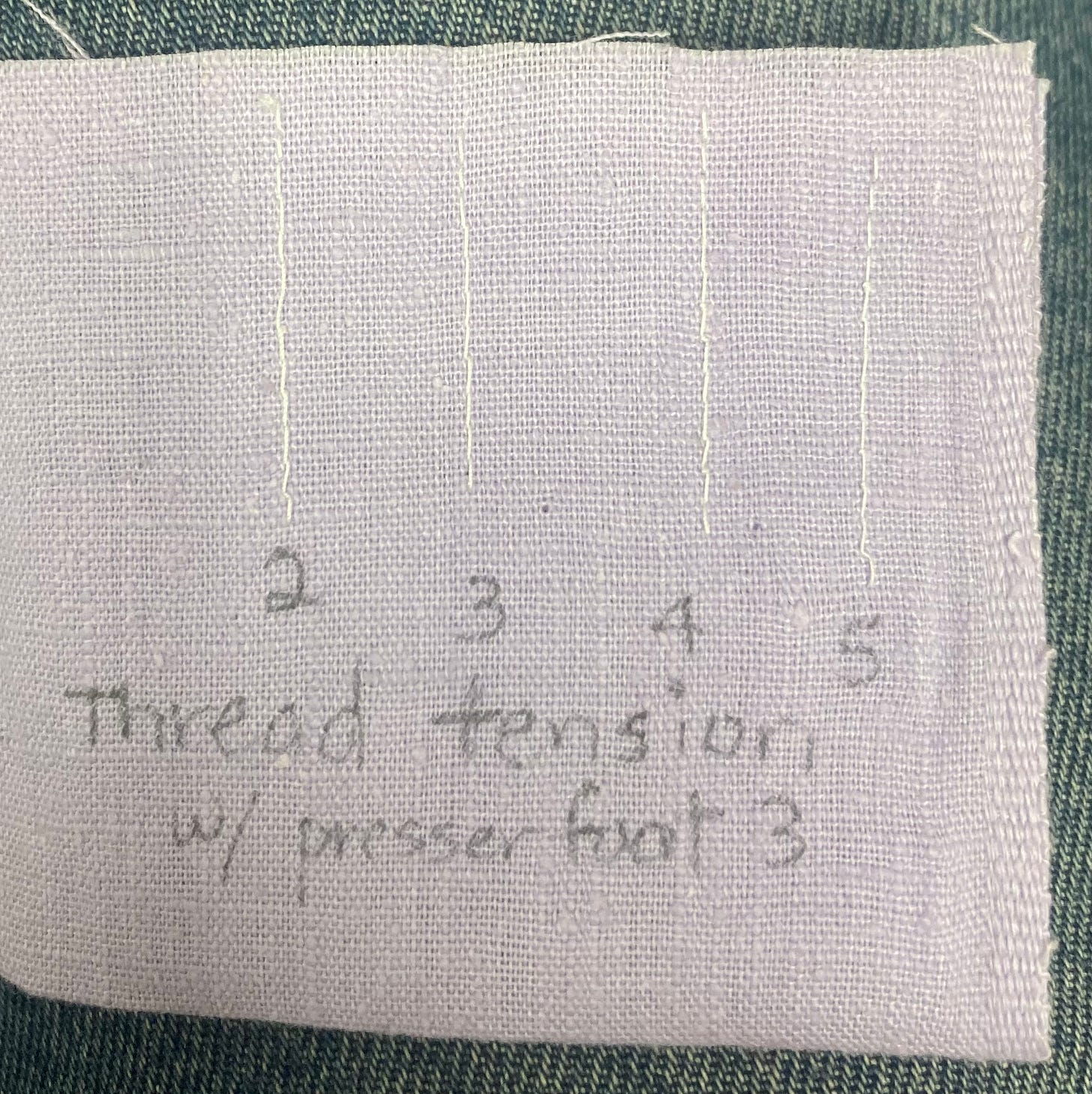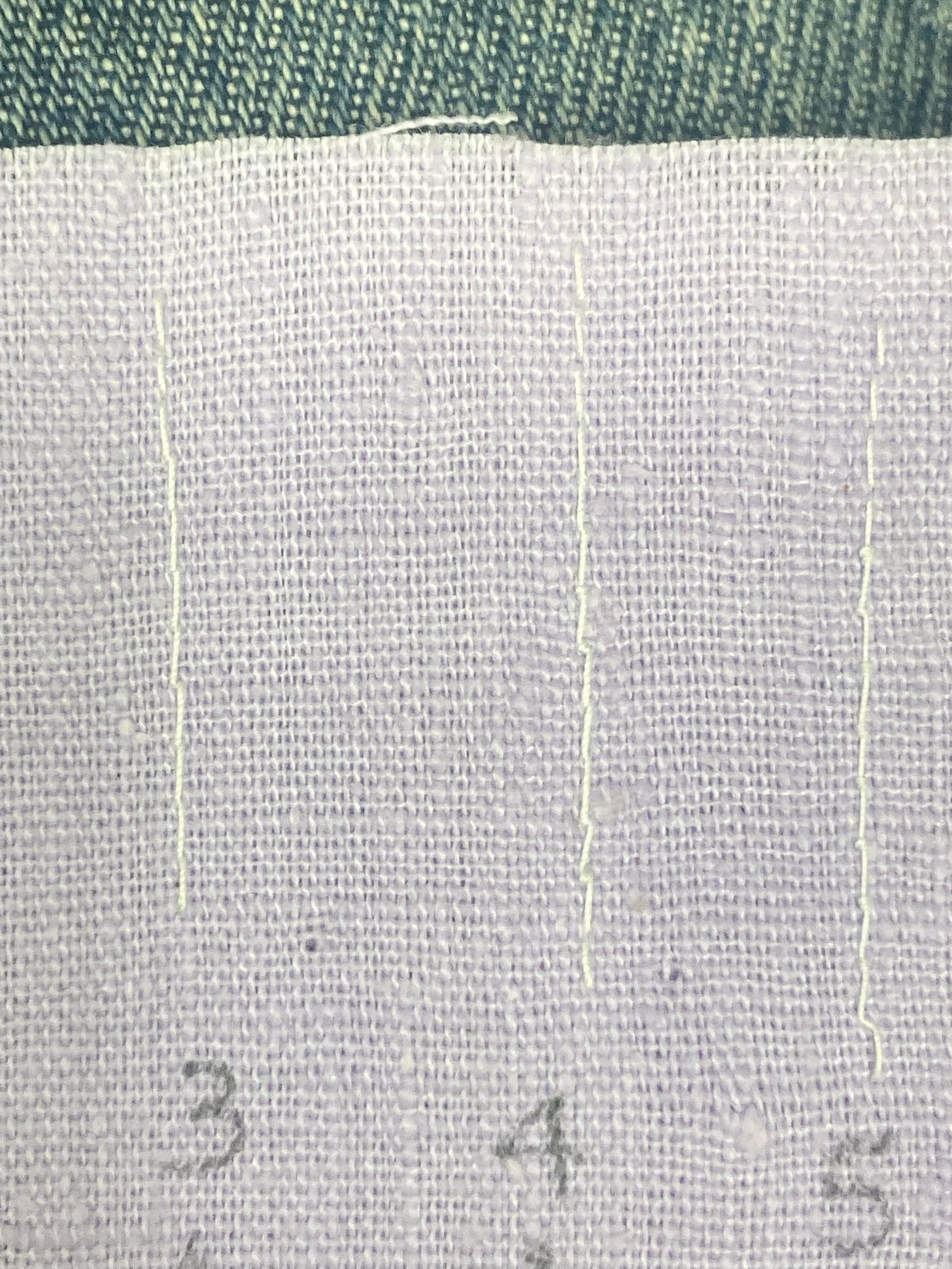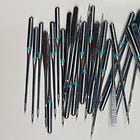How the Relationship Between the Needle, Fabric, and Thread Affects Stitch Quality
Stitch quality is a recipe. Although frustrating at times, I think there’s beauty in the logic behind how it all works.
Not long ago, a gal came into the shop and asked if I could help her solve some problems she was experiencing with the stitch quality of her sewing machine. She had a bunch of stitch samples to show me, all with the same problem.
Her big issue was that the knot was coming up to the top of the fabric, no matter what her tension was set at. It wasn’t happening on every single stitch, but every 3 or 4 stitches consistently. Even when her top tension was set extremely light, which should cause the knot to be sit on the underside of the fabric, the knot was still settling up to the top.
I asked all the basic questions:
What type of machine was she using?
A Janome 5300, arguably the most reliable machine money can buy for less than $1,000.When was the last time her machine was serviced by technician?
3 months ago.What type of thread was using?
Mettler cotton thread, one of the most reputable thread brands on the planet.What type of sewing was she doing?
She was piecing the top of her quilts.What type of material was she using?
A relatively thin cotton fabric.What type of needle was she using?
Schmetz topstitch needle, size 90/14.
It wasn’t until the last 2 questions that I was able to figure out the problem.
A 90/14 topstitch needle is a relatively thick needle, and she was using it sew with fine thread on 2 layers of thin fabric. Because the needle was thick, it was poking a large hole in the thin fabric. Meanwhile, she’s using a fine thread, so the knot that gets tied between the upper thread and lower thread wasn’t a large knot.
In a perfect world, we want the knot to sit in between the fabric we are sewing. However, if the hole in the fabric is significantly larger than the knot, then the knot has a higher chance of being cinched up and shooting all the way to the top of the fabric instead being cinched up to sit in-between the fabric.
This highlights the importance of matching your needle to your fabric to your thread. In this instance, the needle was too large for the thread-fabric combination, so the problem was solved simply by using a size 80/12 needle instead of a 90/14.
Now, if you think about it, the same problem can occur but in a different direction. Say we are piecing using the same thin cotton fabric, we are using the correct 80/12 size needle, but we are using super thick thread (e.g. Aurifil 12-weight thread). The thicker thread will create a larger knot, but the hole in the fabric made by the 80/12 needle will be too small for the knot. In this case, the knot will likely sit on the underside of the fabric because the hole isn’t big enough for it to pass up through. We either need to go back to a larger needle like the aforementioned topstitch 90/14) in order to create a larger), or we need to change the thread to something that is less heavy.
All this is to say, stitch quality is a recipe. Although it can be frustrating at times, I think there’s beauty in the logic behind how it all works.
If you want to learn more about the importance of needle and thread, I invite you to revisit a couple of related articles I published about a year ago:
Thank you for reading,
-Cale








Excellent article!!! You set up a problem and, so very clearly, write the solution! Thank you!
Thanks for another great article! I am enjoying my subscription and learning so much.